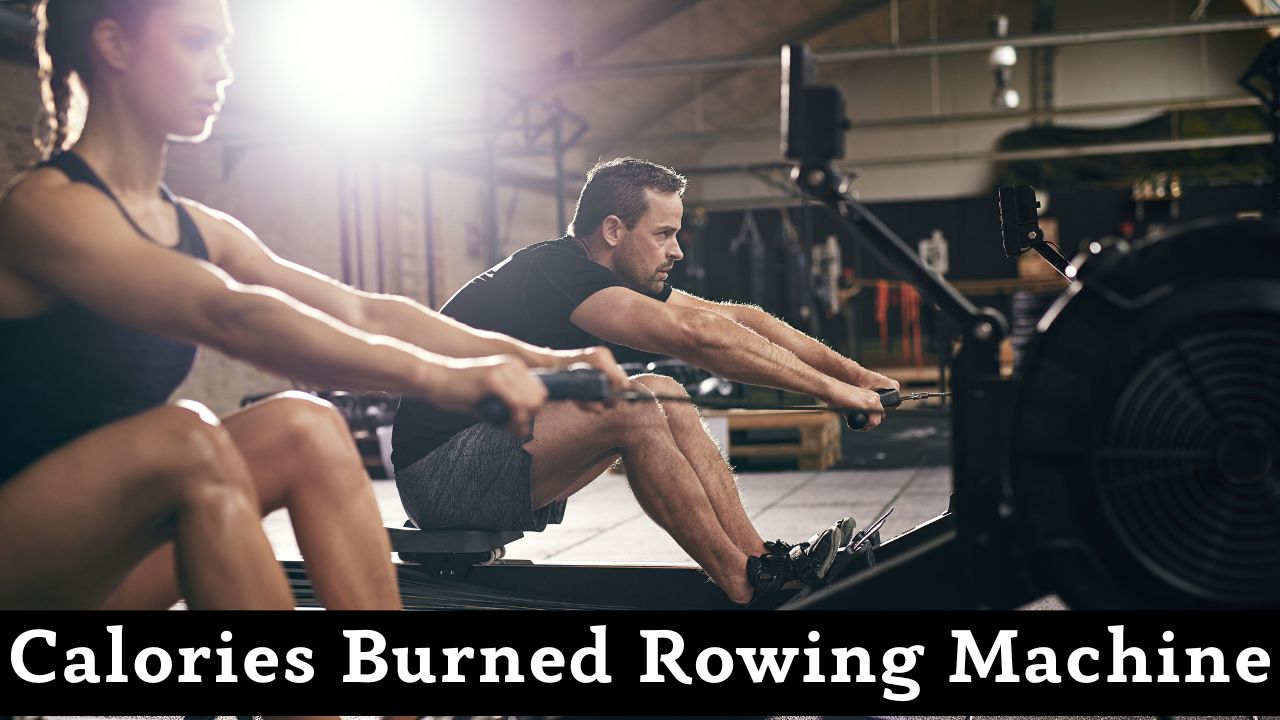Rowing Machine Calorie Calculator
Advanced rowing ergometer energy expenditure calculator with scientific MET analysis and performance optimization

How Many Calories Do You Burn Rowing? 🚣♂️
Rowing burns between 250-700 calories per hour, depending on the specific intensity and power output level. For a 150-pound person, moderate rowing (50-100 watts) can burn approximately 375-425 calories per hour, while high-intensity rowing (150-200 watts) can burn up to 550-650 calories per hour. Light rowing activities like warm-up sessions typically burn around 250-300 calories per hour, making rowing an effective way to stay active while building cardiovascular fitness and muscle strength.
⚡ MET Values and Rowing Intensity Standards
Our calculator uses research-validated MET values derived from extensive rowing research. These values are based on oxygen consumption measurements and provide accurate estimates for energy expenditure across different rowing styles and power outputs. The MET values range from 5.0 for light rowing to 14.0 for maximum effort, with each intensity level corresponding to specific power output ranges and physiological demands.
🎯 Factors Affecting Rowing Calorie Burn
Rowing Calorie Formula & Scientific Methodology
📊 The Scientific Calculation Method
Primary Formula: Calories = (Time × MET × 3.5 × Weight) / 200
Where:
• Time: Duration in minutes
• MET: Metabolic equivalent specific to rowing intensity
• 3.5: Standard oxygen consumption at rest (ml/kg/min)
• Weight: Your body weight in kilograms
• 200: Caloric conversion factor
This formula provides scientifically accurate estimates based on validated research methods used in exercise physiology studies.
🔬 MET Values by Rowing Power Output
Our calculator uses the latest research from the Compendium of Physical Activities:
🚣 Light Rowing: < 50 watts - MET = 5.0 (Easy pace, recovery sessions)
⚡ Moderate Rowing: 50-100 watts – MET = 7.3 (Steady state, endurance building)
💪 Vigorous Rowing: 100-150 watts – MET = 7.5 (Challenging pace, strength focus)
🔥 High-Intensity Rowing: 150-200 watts – MET = 11.0 (Race pace, power development)
🚀 Maximum Rowing: 200+ watts – MET = 14.0 (Elite effort, peak performance)
These values are adjusted for experience level, with beginners being 10% less efficient and elite rowers 10% more efficient.
Rowing Intensity Standards & Performance Levels
| Power Output | MET Value | Intensity Level | Calories/Hour (70kg) | Physiological Demand |
|---|---|---|---|---|
| < 50 watts | 5.0 | Light | 350 cal/hr | Easy pace, recovery |
| 50-100 watts | 7.3 | Moderate | 511 cal/hr | Steady state, endurance |
| 100-150 watts | 7.5 | Vigorous | 525 cal/hr | Challenging pace |
| 150-200 watts | 11.0 | High Intensity | 770 cal/hr | Race pace, anaerobic |
| 200+ watts | 14.0 | Maximum | 980 cal/hr | Elite effort, peak power |
Note: Calorie values shown for a 70kg (154lb) rower. Actual values vary with body weight, experience level, and rowing efficiency. Power output measurements provide the most accurate intensity assessment for rowing machines.
How Many Calories Does Rowing Burn Over Time? 🚣♂️
⏱️ Time-Based Rowing Calorie Estimates
The time spent rowing directly impacts total calorie expenditure. These estimates are based on moderate rowing effort (7.3 METs, 50-100 watts) on a standard rowing machine, providing reliable estimates for fitness planning and weight management goals. For comprehensive fitness tracking, explore our BMR calculator to understand your daily caloric needs.
| Time | 130 lb (59 kg) | 150 lb (68 kg) | 175 lb (79 kg) | 200 lb (91 kg) | 225 lb (102 kg) | 250 lb (113 kg) |
|---|---|---|---|---|---|---|
| 10 mins | 61 cal | 70 cal | 82 cal | 94 cal | 106 cal | 118 cal |
| 15 mins | 92 cal | 106 cal | 124 cal | 142 cal | 160 cal | 178 cal |
| 20 mins | 122 cal | 141 cal | 165 cal | 189 cal | 213 cal | 237 cal |
| 30 mins | 184 cal | 212 cal | 248 cal | 284 cal | 320 cal | 356 cal |
| 45 mins | 276 cal | 318 cal | 372 cal | 426 cal | 480 cal | 534 cal |
| 60 mins | 368 cal | 424 cal | 496 cal | 568 cal | 640 cal | 712 cal |
| 90 mins | 552 cal | 636 cal | 744 cal | 852 cal | 960 cal | 1068 cal |
| 2 hours | 736 cal | 848 cal | 992 cal | 1136 cal | 1280 cal | 1424 cal |
Note: Values based on moderate rowing effort (7.3 METs, 50-100 watts) for an intermediate rower. Higher intensities can burn 2-3 times more calories. Experience level affects efficiency by ±10%.
Advanced Rowing Performance & Technique Optimization
🏔️ Power Output and Rowing Efficiency
Wattage-Based Training: Power output (measured in watts) provides the most accurate assessment of rowing intensity.
Research from the Compendium of Physical Activities shows that
energy expenditure increases exponentially with power output. A 150-watt effort burns nearly twice as many calories as a 100-watt effort
despite similar perceived effort levels.
Technique Efficiency: Proper rowing technique can improve calorie burn by 15-25% at the same power output.
The four-phase rowing stroke (catch, drive, finish, recovery) optimizes muscle engagement and reduces energy waste.
Focus on leg drive (60% of power), followed by back swing, then arm pull for maximum efficiency.
⚡ High-Intensity Interval Rowing for Maximum Calorie Burn
HIIT Rowing Benefits: High-intensity interval training on rowing machines can burn 2-3 times more calories
than steady-state rowing in the same time period. The EPOC (excess post-exercise oxygen consumption) effect continues
burning calories for hours after intense rowing sessions. Try HIIT workout plans
to structure your rowing intervals effectively.
Power Intervals: Alternating between high-power efforts (150-200 watts) and recovery periods maximizes
both immediate calorie burn and long-term metabolic adaptations. This approach is particularly effective for
weight management and cardiovascular fitness.
💪 Supporting Your Rowing Performance
Core Strength Development: A strong core improves rowing efficiency and power transfer.
Core strengthening exercises
are essential for optimal rowing performance and injury prevention.
Leg Power Enhancement: Rowing relies heavily on leg strength for power generation.
Targeted leg exercises
improve rowing power output and efficiency. Support your training with proper
protein intake for muscle recovery.
Rowing Machine Calorie Calculator FAQs 🚣♂️
❓ How accurate is the rowing calorie calculator?
Our calculator uses the scientifically validated formula: Calories = (Time × MET × 3.5 × Weight) / 200, combined with research-based MET values from the Compendium of Physical Activities. This provides accuracy within 10-15% for most individuals, which is comparable to laboratory measurements. The calculations are based on extensive rowing research and validated MET compendiums.
🚣 Does rowing intensity significantly affect calorie burn?
Yes, dramatically. Rowing calorie burn increases exponentially with intensity. A vigorous rowing session (11.0 METs) can burn 2-3 times more calories than light rowing (5.0 METs) in the same time period. Power output, measured in watts, provides the most accurate intensity assessment for rowing machines.
⚖️ How does body weight affect rowing calories?
Body weight directly affects rowing calorie burn through increased energy requirements for movement and power generation. The relationship is linear: a 20% increase in body weight typically results in approximately 20% more calories burned for the same rowing intensity. This is because heavier individuals require more energy to achieve the same power output.
⏱️ How long should I row for optimal calorie burn?
For optimal calorie burn, aim for 20-45 minutes of moderate to vigorous rowing per session, 3-5 times per week. Shorter, high-intensity sessions (15-30 minutes) can burn more calories per minute but may be more challenging. The key is consistency and gradual progression in both duration and intensity.
🎯 What factors affect rowing calorie calculations?
Multiple factors influence rowing calorie burn: body weight, rowing intensity (power output), stroke technique, experience level, duration, and rowing machine settings. Our calculator accounts for all these variables using research-validated adjustments for maximum accuracy.
📱 Can I share my rowing results for training analysis?
Yes! Our sharing and export features allow you to track progress and share results with coaches or training partners. The export function creates CSV files compatible with training software, power analysis tools, and fitness apps. Combine rowing data with our VO2 max calculator and FTP calculator for comprehensive performance analysis.
⚕️ Rowing & Fitness Safety Disclaimer
This rowing machine calorie calculator provides estimates based on scientific formulas and should not replace professional medical advice or exercise guidance. Calorie estimates are most accurate when combined with comprehensive health assessments including cardiovascular health, musculoskeletal fitness, and metabolic rate measurements. Individual results may vary due to genetic factors, health conditions, medications, rowing technique, experience level, equipment quality, and environmental conditions. The intensity guidelines are based on population studies and may not apply to all individuals. When beginning new rowing programs, start gradually and progress slowly to prevent injury. Consult with healthcare professionals, certified rowing coaches, or sports medicine specialists before beginning intensive rowing programs, especially if you have pre-existing health conditions or injuries. This tool is for educational and informational purposes only and should not be used as the sole basis for exercise or health decisions.
